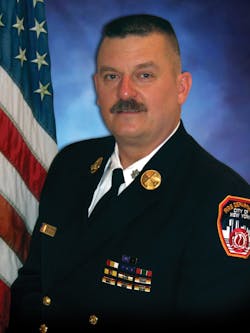The phrase “command and control” has been used for decades to describe vital skills and abilities that an incident commander (IC) needs to be effective on the fireground. More recently, the term is used less frequently, and the actual practice of commanding and controlling operations on the fireground is fading away in some departments.
As years go by and new generations of firefighters enter and populate the fire service, some things change.
Training, for example, is conducted differently in some organizations, using more modern electronic software over shorter, more-focused time periods.
Firehouse designs have evolved. Some are configured more like a hotel than a firehouse, with individual bunk rooms and fewer group assembly areas.
Often, changes work well and prove to be effective with the newer breed of firefighters. But some other things that have been practiced for many years retain their value and should continue to be used by today’s chief officers and ICs. Command and control is one of those things, because it provides a very effective on-scene atmosphere, where we do some of the most important work in our communities.
Not open for discussion
Let’s dissect the term and look at “command” as a standalone activity. The word command is defined as “to direct with specific authority,” “to have or exercise authority or control over” or “to have authority over and responsibility for.” Each definition clearly points out that command is the activity of directing the activities and movements of the people who are being commanded. There are many situations and activities that chiefs, company officers and firefighters participate in where command doesn’t apply or fit in necessarily. Discussions or even actual training events often are conducted with input and agreement and even disagreement between the various participating personnel. Often, house duties and activities also are conducted with input and direction from personnel of various ranks, rather than as a command from a superior.
What activities require strict and consistent command rather than group participation? First and foremost is the emergency scene. There is little if any room for discussion and debate at the scene of a working fire, building collapse or transportation accident. These scenes are where the training, demeanor and experience of the IC need to be observed, obeyed and implemented. Company officers—and to a greater extent, chief officers—need to expect that their troops will comply with emergency-scene directives immediately and without debate or discussion. If every order or directive was open for discussion, many emergency scenes quickly would deteriorate and become dramatically more dangerous for both the operating members and the civilians who await our immediate intervention in their emergency. Establishing and, yes, enforcing the concept of command are vital to the capability of a fire department. They permit rapid and effective handling of dangerous and developing emergency scenes in their jurisdictions.
Sphere of influence
Two definitions of control—the second ingredient of a good command and control concept—are “to exercise restraint or control over” and “to hold in check.” These definitions have a similar ring to the definitions of the word command but obviously are a step or two below the immediacy and authority of command. Although having control of a situation might or might not include being in command of the entire operation, the control element of command and control is as vital as establishing and practicing command.
Controlling a situation, which could be an incident or training event or even a public service activity, involves setting the tone and direction. A battalion chief could meet with a captain and direct him to have the hosebed of the apparatus repacked that shift. He might not give any further direction or instruction, but he sets the pace and has control over the event. Control is as vital an ingredient as command in most of our activities and operations.
Command and control: How are you handing this vital skill in your department?
About the Author
John J. Salka Jr.
Battalion Chief
JOHN J. SALKA JR., who is a Firehouse contributing editor, retired as a battalion chief with FDNY, serving as commander of the 18th battalion in the Bronx. Salka has instructed at several FDNY training programs, including the department’s Probationary Firefighters School, Captains Management Program and Battalion Chiefs Command Course. He conducts training programs at national and local conferences and has been recognized for his firefighter survival course, “Get Out Alive.” Salka co-authored the FDNY Engine Company Operations manual and wrote the book "First In, Last Out–Leadership Lessons From the New York Fire Department." He also operates Fire Command Training, which is a New York-based fire service training and consulting firm.

